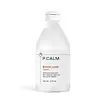What's inside
What's inside
 Key Ingredients
Key Ingredients

 Benefits
Benefits

 Concerns
Concerns

 Ingredients Side-by-side
Ingredients Side-by-side

Water
Skin ConditioningButylene Glycol
HumectantPropanediol
Solvent1,2-Hexanediol
Skin ConditioningNiacinamide
SmoothingPanthenol
Skin ConditioningEthylhexylglycerin
Skin ConditioningAllantoin
Skin ConditioningAdenosine
Skin ConditioningXanthan Gum
EmulsifyingDisodium EDTA
Polyquaternium-51
Skin ConditioningLaurus Nobilis Leaf Extract
MaskingPlantago Asiatica Extract
Skin ConditioningSodium Hyaluronate
HumectantHamamelis Virginiana Water
AstringentAmorphophallus Konjac Root Extract
HumectantSodium Guaiazulene Sulfonate
Carica Papaya Fruit Extract
Skin ConditioningLactobacillus Ferment
Skin ConditioningBambusa Vulgaris Extract
Skin ConditioningChamaecyparis Obtusa Leaf Extract
Skin ConditioningPinus Densiflora Leaf Extract
AntimicrobialThuja Orientalis Extract
AntimicrobialAcacia Seyal Gum Extract
HumectantCentella Asiatica Extract
CleansingMelaleuca Alternifolia Leaf Extract
PerfumingOryza Sativa Bran Extract
Skin ConditioningAsiatic Acid
Skin ConditioningAsiaticoside
AntioxidantMadecassic Acid
Skin ConditioningMadecassoside
AntioxidantWater, Butylene Glycol, Propanediol, 1,2-Hexanediol, Niacinamide, Panthenol, Ethylhexylglycerin, Allantoin, Adenosine, Xanthan Gum, Disodium EDTA, Polyquaternium-51, Laurus Nobilis Leaf Extract, Plantago Asiatica Extract, Sodium Hyaluronate, Hamamelis Virginiana Water, Amorphophallus Konjac Root Extract, Sodium Guaiazulene Sulfonate, Carica Papaya Fruit Extract, Lactobacillus Ferment, Bambusa Vulgaris Extract, Chamaecyparis Obtusa Leaf Extract, Pinus Densiflora Leaf Extract, Thuja Orientalis Extract, Acacia Seyal Gum Extract, Centella Asiatica Extract, Melaleuca Alternifolia Leaf Extract, Oryza Sativa Bran Extract, Asiatic Acid, Asiaticoside, Madecassic Acid, Madecassoside
Water
Skin ConditioningNiacinamide
SmoothingGlycerin
HumectantInulin
Skin ConditioningAlpha-Glucan Oligosaccharide
CleansingAllantoin
Skin ConditioningButylene Glycol
HumectantAloe Barbadensis Leaf Juice
Skin ConditioningPhenoxyethanol
PreservativeAnthemis Nobilis Flower Water
MaskingRosmarinus Officinalis Water
MaskingHamamelis Virginiana Leaf Extract
Skin ConditioningPotassium Sorbate
PreservativeSodium Benzoate
MaskingEthylhexylglycerin
Skin Conditioning1,2-Hexanediol
Skin ConditioningBeta-Glucan
Skin ConditioningCaprylyl Glycol
EmollientWater, Niacinamide, Glycerin, Inulin, Alpha-Glucan Oligosaccharide, Allantoin, Butylene Glycol, Aloe Barbadensis Leaf Juice, Phenoxyethanol, Anthemis Nobilis Flower Water, Rosmarinus Officinalis Water, Hamamelis Virginiana Leaf Extract, Potassium Sorbate, Sodium Benzoate, Ethylhexylglycerin, 1,2-Hexanediol, Beta-Glucan, Caprylyl Glycol
 Reviews
Reviews

Ingredients Explained
These ingredients are found in both products.
Ingredients higher up in an ingredient list are typically present in a larger amount.
1,2-Hexanediol is a synthetic liquid and another multi-functional powerhouse.
It is a:
- Humectant, drawing moisture into the skin
- Emollient, helping to soften skin
- Solvent, dispersing and stabilizing formulas
- Preservative booster, enhancing the antimicrobial activity of other preservatives
Allantoin is a soothing ingredient known for its protective and moisturizingg properties. Because of this, it is often added to products with strong active ingredients.
Studies show higher concentrations of this ingredient can promote wound healing.
Though it can be derived from the comfrey plant, allantoin is produced synthetically for cosmetic products to ensure purity.
Learn more about AllantoinButylene Glycol (or BG) is used within cosmetic products for a few different reasons:
Overall, Butylene Glycol is a safe and well-rounded ingredient that works well with other ingredients.
Though this ingredient works well with most skin types, some people with sensitive skin may experience a reaction such as allergic rashes, closed comedones, or itchiness.
Learn more about Butylene GlycolEthylhexylglycerin (we can't pronounce this either) is commonly used as a preservative and skin softener. It is derived from glyceryl.
You might see Ethylhexylglycerin often paired with other preservatives such as phenoxyethanol. Ethylhexylglycerin has been found to increase the effectiveness of these other preservatives.
Niacinamide is a multitasking form of vitamin B3 that strengthens the skin barrier, reduces pores and dark spots, regulates oil, and improves signs of aging.
And the best part? It's gentle and well-tolerated by most skin types, including sensitive and reactive skin.
You might have heard of "niacin flush", or the reddening of skin that causes itchiness. Niacinamide has not been found to cause this.
In very rare cases, some individuals may not be able to tolerate niacinamide at all or experience an allergic reaction to it.
If you are experiencing flaking, irritation, and dryness with this ingredient, be sure to double check all your products as this ingredient can be found in all categories of skincare.
When incorporating niacinamide into your routine, look out for concentration amounts. Typically, 5% niacinamide provides benefits such as fading dark spots. However, if you have sensitive skin, it is better to begin with a smaller concentration.
When you apply niacinamide to your skin, your body converts it into nicotinamide adenine dinucleotide (NAD). NAD is an essential coenzyme that is already found in your cells as "fuel" and powers countless biological processes.
In your skin, NAD helps repair cell damage, produce new healthy cells, support collagen production, strengthen the skin barrier, and fight environmental stressors (like UV and pollution).
Our natural NAD levels start to decline with age, leading to slower skin repair, visible aging, and a weaker skin barrier. By providing your skin niacinamide, you're recharging your skin's NAD levels. This leads to stronger, healthier, and younger looking skin.
Another name for vitamin B3 is nicotinamide. This vitamin is water-soluble and our bodies don't store it. We obtain Vitamin B3 from either food or skincare. Meat, fish, wheat, yeast, and leafy greens contain vitamin B3.
The type of niacinamide used in skincare is synthetically created.
Learn more about NiacinamideWater. It's the most common cosmetic ingredient of all. You'll usually see it at the top of ingredient lists, meaning that it makes up the largest part of the product.
So why is it so popular? Water most often acts as a solvent - this means that it helps dissolve other ingredients into the formulation.
You'll also recognize water as that liquid we all need to stay alive. If you see this, drink a glass of water. Stay hydrated!
Learn more about Water